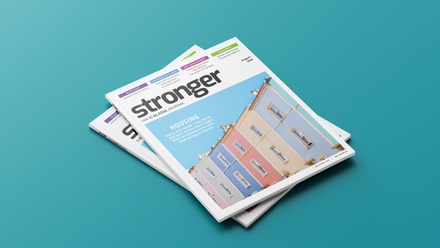It had a soft launch which some might suggest is at odds with its vision and bold promises of making more accessible housing, easier commuting and better job prospects a reality for the 14.1 million disabled people in the UK.
Described by Boris Johnson in the foreword as a “comprehensive, concerted, cross-government plan by a Government determined” to “level up the country”, what does the Strategy seek to achieve from a housing perspective, and what will it mean for housing providers?
Firstly, the Strategy notes that disabled people are more likely to rent than own their property. Only one in ten homes has at least one adaptation for disabled people, even though 47% of respondents to the UK Disability Survey reported having some difficulty in getting in and out of where they live.
In fact the 2018-19 English Housing Survey suggests the proportion of homes in England with key accessible features nearly doubled from five per cent in 2009 to nine per cent in 2018, but according to the Strategy less than half of the local plans in England for new homes include requirements for a proportion of new homes to meet higher disability standards.
In response, the Strategy pledges to take immediate steps to:
- Boost the supply of housing for disabled people by raising accessibility standards for new homes, increasing the supply of affordable homes and accelerating the adaptation of existing homes by improving the efficiency of local authority delivery of the Disabled Facilities Grant.
- Extend disabled tenants’ rights on accessibility.
- Ensure the safety of disabled people in buildings in emergencies.
- Boosting the supply of housing for disabled people.
In Scotland and Northern Ireland Accessible Housing Registers and Accessible Homes Standards will be introduced but the Strategy does not set out how its aims will be achieved in England and Wales. It is suggested that the Ministry for Housing, Communities and Local Government (MHCLG) will confirm plans to improve the framework to deliver accessible new homes by December 2021.
Further, research is being commissioned to develop the statutory guidance on meeting Building Regulations, covering access to and the use of buildings. A commitment is also made to boost the supply of supported housing with integrated care services through the Affordable Homes Programme, with a promise that ten per cent of the 180,000 homes built through the programme in 2021-26 will be for supported housing.
The Strategy notes that half of the 180,000 homes will be open to shared ownership which is, of course, not specific to people with disabilities. New measures have already been introduced via the new model for shared ownership, where the initial purchaser stake has been reduced from 25% to 10% and support is provided by landlords for repair and maintenance costs for the first ten years on new build homes.
Extending disabled tenants’ rights on accessibility
Section 36 of the Equality Act 2010 included provisions to give tenants the right to require landlords to make reasonable adjustments to the common parts of buildings. The Strategy confirms this provision will now be brought into force in England and Wales but provides no start date.
The Cabinet Office will progress work to require landlords to make reasonable adjustments to the common parts, and a consultation is planned for 2021, however landlords can ask tenants to pay for such reasonable adjustments.
Ensuring the safety of disabled people
The Strategy refers to Building Regulations guidance, which includes provisions for assisted escape for disabled people. In 2015 the MHCLG concluded that the Regulations met minimum standards but has now commissioned new research to develop robust evidence to inform policy in England on the means of escape from buildings, care homes and specialised housing for disabled people. This is due to conclude by Autumn 2021.
A missed opportunity?
From a housing perspective, the general consensus of building and disability bodies is that the Strategy, while a step in the right direction, is a missed opportunity to take immediate action to improve accessibility.
Alan Jones of the Royal Institute of British Architects commented that while he was encouraged by the Government’s commitment to reform: “we urgently need solid timescales, plans and funding. Building Back Better must be built on a foundation of equity and enable us to deliver accessible, inclusive and sustainable post-pandemic communities. ‘Levelling up’ must be done in collaboration with the communities it seeks to serve, and so it is disappointing that the consultation failed to work with disabled people to design a strategy that will stand the test of time and is built upon concrete funding commitments.”
As such, the specific impact on housing providers is yet to be seen. Housing providers would be well advised to contribute to the consultations to ensure their concerns are heard.




